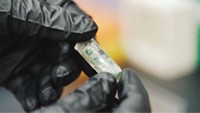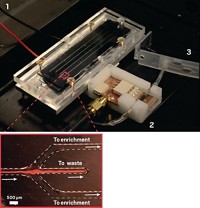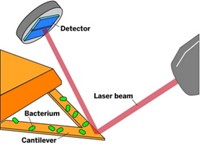Advertisement
Grab your lab coat. Let's get started
Welcome!
Welcome!
Create an account below to get 6 C&EN articles per month, receive newsletters and more - all free.
It seems this is your first time logging in online. Please enter the following information to continue.
As an ACS member you automatically get access to this site. All we need is few more details to create your reading experience.
Not you? Sign in with a different account.
Not you? Sign in with a different account.
ERROR 1
ERROR 1
ERROR 2
ERROR 2
ERROR 2
ERROR 2
ERROR 2
Password and Confirm password must match.
If you have an ACS member number, please enter it here so we can link this account to your membership. (optional)
ERROR 2
ACS values your privacy. By submitting your information, you are gaining access to C&EN and subscribing to our weekly newsletter. We use the information you provide to make your reading experience better, and we will never sell your data to third party members.
Analytical Chemistry
Diagnostic chip corrals bacteria with sound
Microfluidic device uses sound waves to concentrate bacteria from blood samples for diagnosing sepsis
by Erika Gebel Berg, special to C&EN
July 4, 2016
| A version of this story appeared in
Volume 94, Issue 27
When a patient develops sepsis, a potentially fatal inflammatory response to an infection, doctors race to identify what bacterial strain is to blame so they can deliver the best antibiotic. This hunt can take days. Now, Thomas Laurell of Lund University and colleagues have developed a microfluidic chip that detects bacteria from a drop of blood within a couple of hours (Anal. Chem. 2016, DOI: 10.1021/acs.analchem.6b00323). The device has three stages. In the first two, a piezoceramic transducer that vibrates like a cell phone generates standing acoustic waves along the channels. The waves focus blood cells into the center of the stream, allowing them to be directed into a waste compartment. The bacteria are too small to notice the sound waves, so they continue to the second stage, where they run into a honeycomb of polystyrene particles. Here, a force created by the sound waves causes the bacteria to stick to the particles. With the bacteria stuck, the remaining blood components wash away. Then the researchers turn off the transducer, releasing the bacteria from the particles so the cells can travel to the third stage where they are identified using a polymerase chain reaction method. The device successfully identified Escherichia coli in half of blood samples from septic patients.





Join the conversation
Contact the reporter
Submit a Letter to the Editor for publication
Engage with us on Twitter